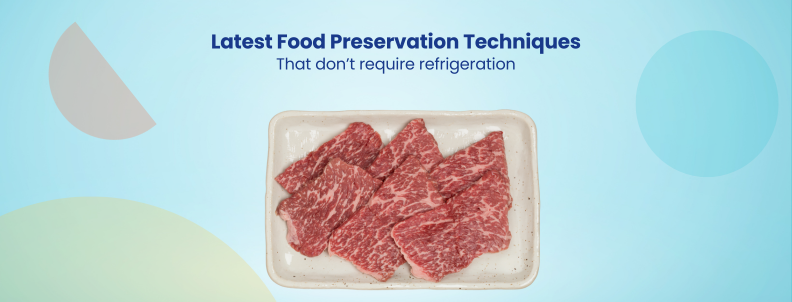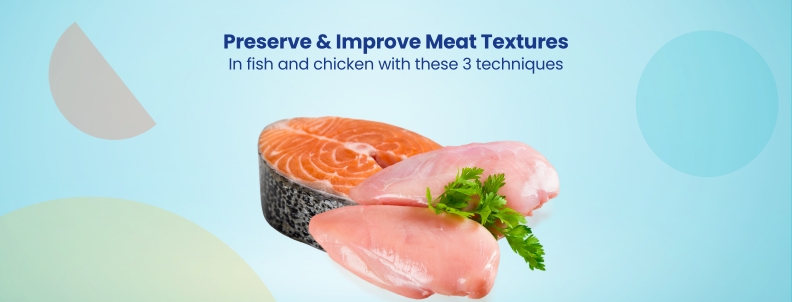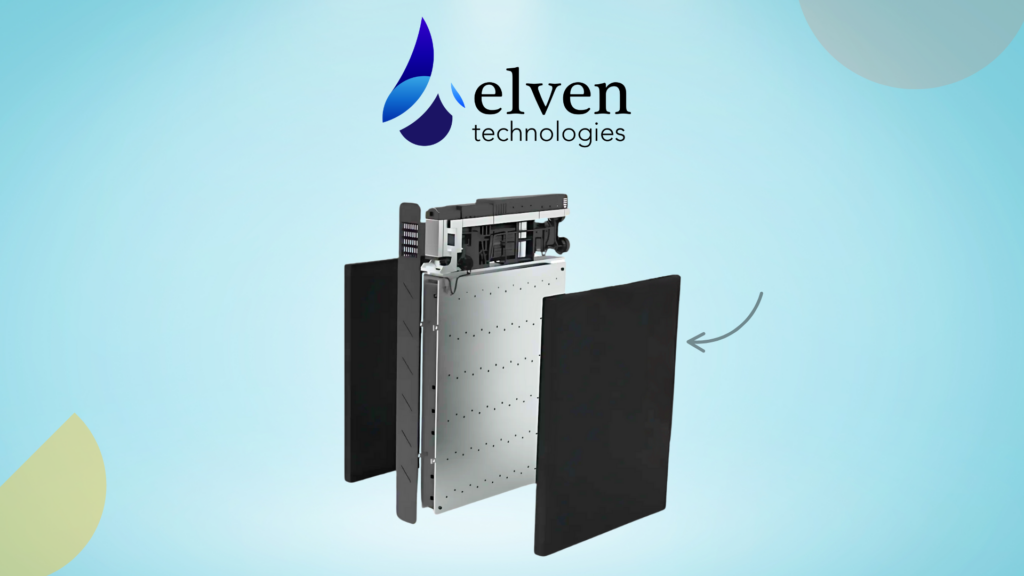The rapidly changing market standards and consumers’ demand for nutrition and flavor-rich fresh food have pushed companies to preserve food products without reducing quality. Refrigeration can often ruin the texture and reduce the food’s nutritional value; traditional preservation methods like salting or smoking the food won’t do the trick either, as they often compromise flavor. Therefore, companies are adopting natural food preservation methods.
This report compiles the recent successful natural preservation techniques and inventions and the emerging service providers that preserve food quality and flavor while enhancing the shelf life of meat-free chilled foods without refrigeration.
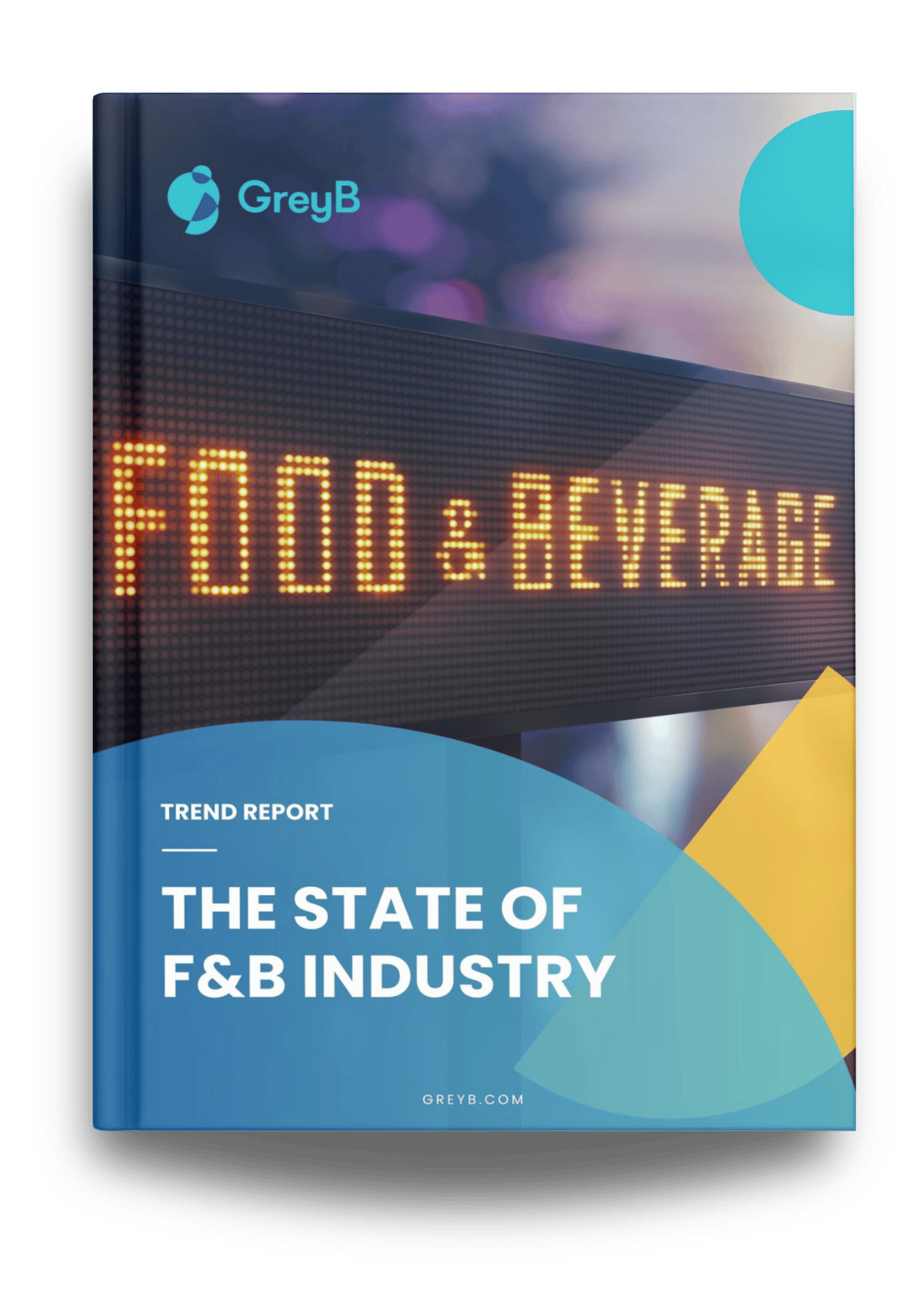
The key research focus areas are natural ingredients, physical methods, and packaging techniques.
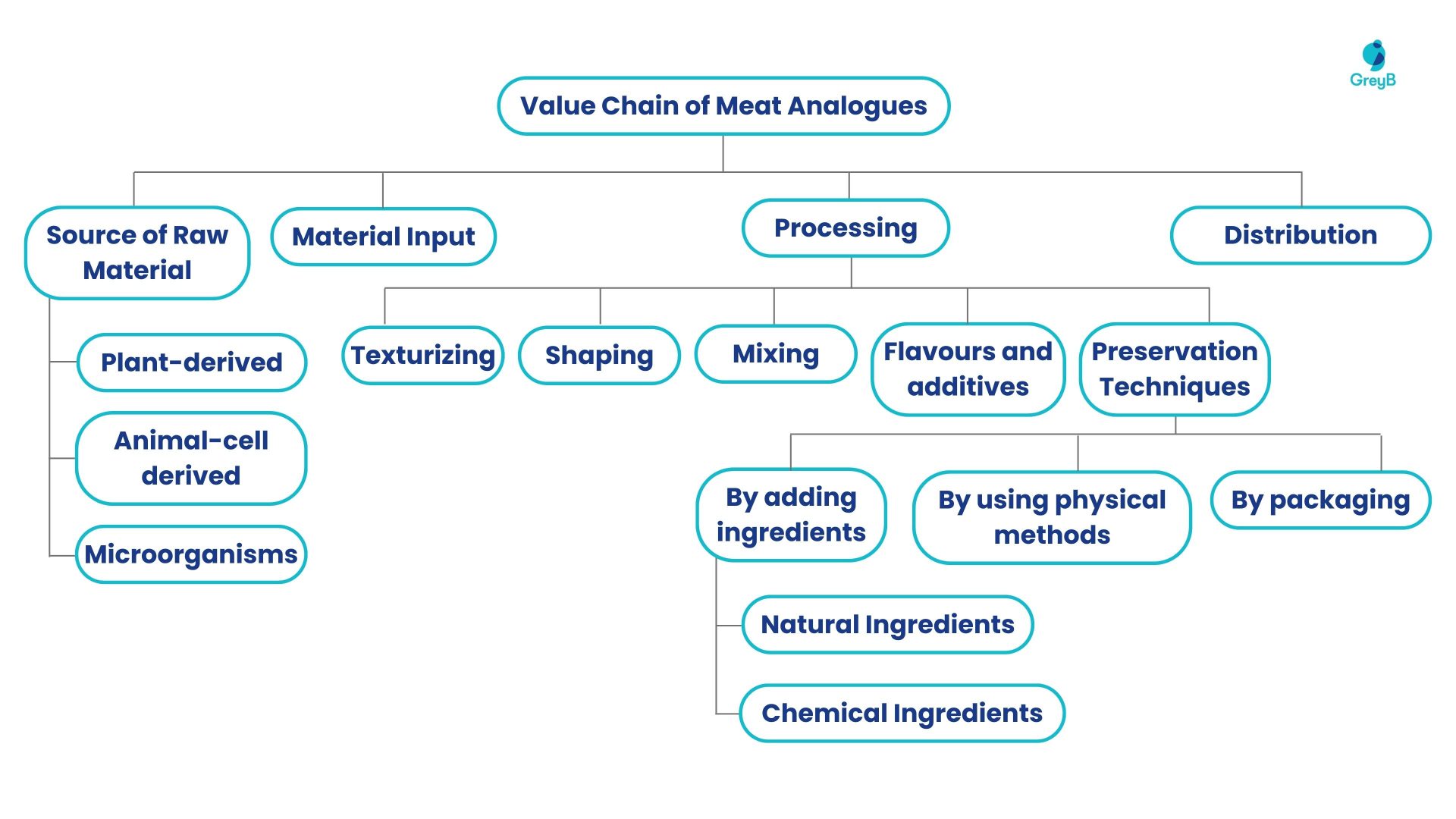
Overview of key innovators
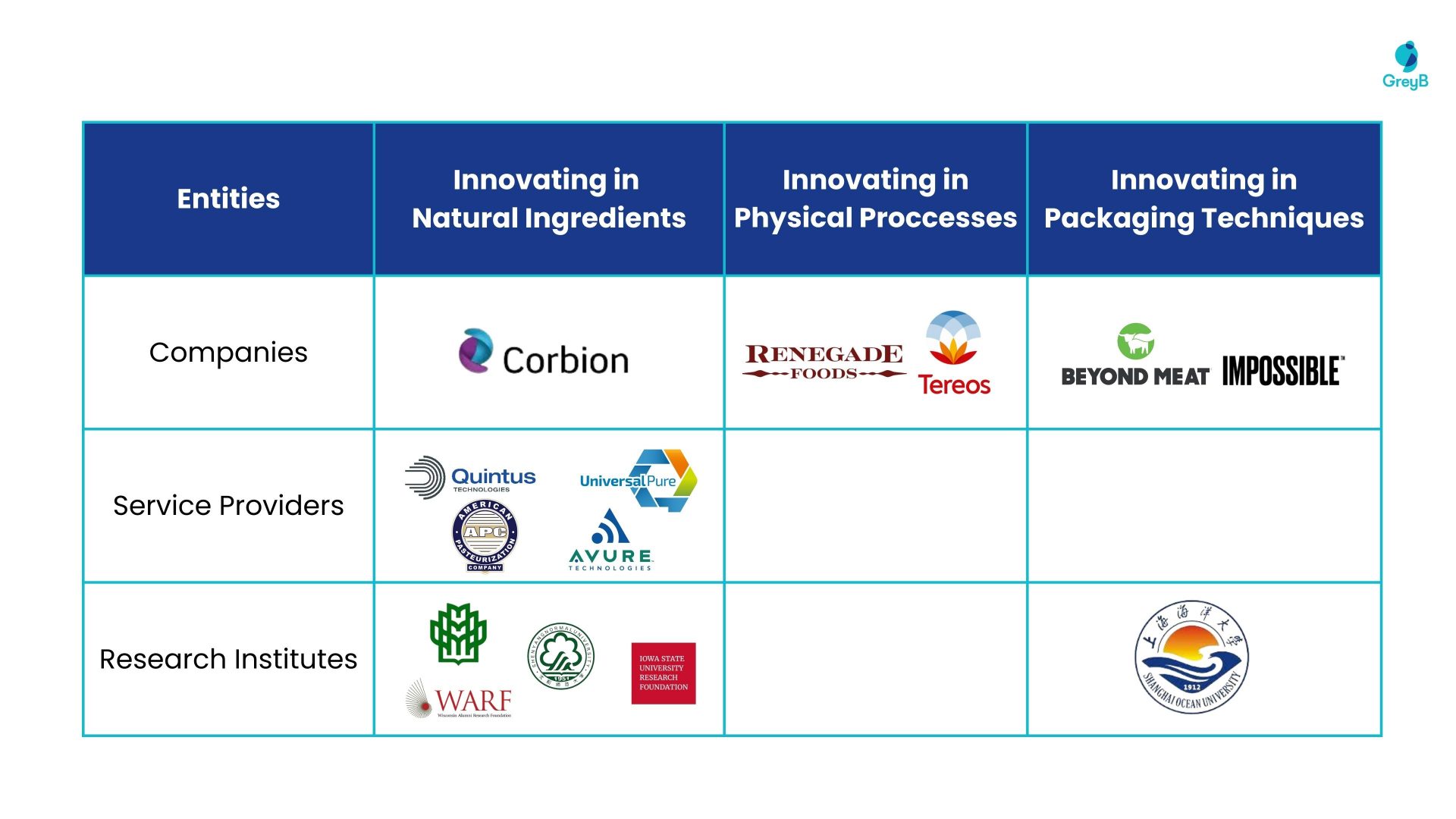
The prominent companies, institutes, and service providers innovating natural ingredients
1. Corbion
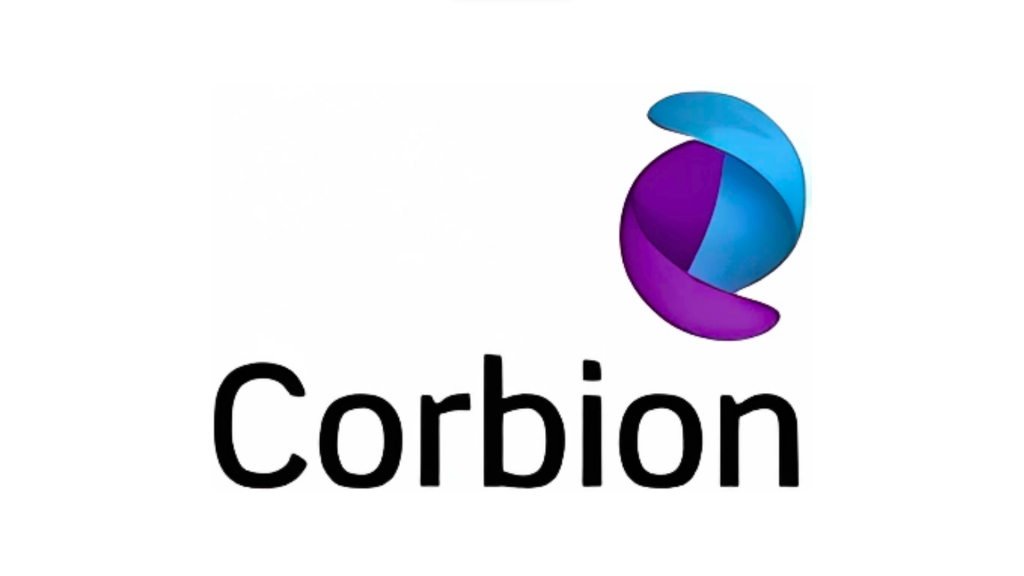
Corbion, a Dutch food and biochemicals company, has created a clean-label product incorporating fermentation-derived ingredients and a unique blend of metabolites for enhanced shelf life.
Their commercialized product, Verdad® Opti Powder N80, is a composition of label-friendly natural ingredients for the preservation of meat analogs, such as:
- Cultured sugar
- Vinegar
- Metabolites
- Organic acids
Advantages
- Listeria control
- Shelf life extension
- Protection against clostridium
- Mold and yeast inhibition,
- It provides a lower sodium contribution compared to other market solutions.
Purac Biochem, Corbion’s legal entity from the Netherlands, holds a patent for the ingredient’s composition. This composition of label-friendly natural ingredients is designed to preserve and improve the quality of meat analogs.
Our analysts derived the following details about the composition’s breakdown by analyzing Corbion’s patents.
- Lactate (30-80% w/w)
- Acetate (30-80% w/w)
- Anthocyanin (0.04-2.5% w/w)
- Carotenoid (0.1-10 mg/kg)
Deciphering patent literature is challenging yet crucial when researching solutions available in the market. Our experts can turn all your IP worries into impeccable, actionable insights. Use the button below to get a callback from us!

2. Gorgan University

We have noticed a growing interest among research institutes in natural food preservation. Gorgan University is exploring plant extracts and heme-stabilizing agents for improved oxidative stability and natural preservation in meat-free burgers.
Innovation: The university is researching using Opuntia fruit pulp to preserve meat analogs.
Properties: Opuntia is a rich source of polyphenols and carbohydrates and a clean-label ingredient that enhances a meat-free burger’s functional properties.
Advantages:
- Enhances moisture retention
- Achieves oxidative stability of meat-free burgers.
3. ISU Research Foundation & WARF

Iowa State University’s Research Foundation and Wisconsin Alumni Research Foundation have combined efforts to work on compositions and methods of preserving meat substitutes. In 2016, they also filed a patent for their work.
This innovation focuses on compositions and methods for preserving meat substitutes containing plant heme protein. They used a patented heme-stabilizing agent to improve the storage life.
This agent is made of the following components:
- niacin,
- imidazole,
- 4-methyl imidazole,
- or histidine.
Advantages:
- This method helps the food retain its natural color and remain palatable for an extended period, even at low temperatures
- The method allows adjustment of the product’s pH within about 6.0 – 6.8, allowing further optimizations to the preservation process
- It works well with preservatives such as PLA2 enzyme and/or rosemary extract to improve food stability
- Compatible with analogs containing heme-stabilizing agents at a concentration of about 50 to 250 umol/kg.
This innovation was supported by the Federal government and awarded by the USDA/NIFA.
Another patent application by the university in 2019 describes a novel solution to preserve the color of meat analogs to improve their storage life.
This indicates that the university is actively searching for novel meat substitute preservation techniques.
4. Shenyang Normal University
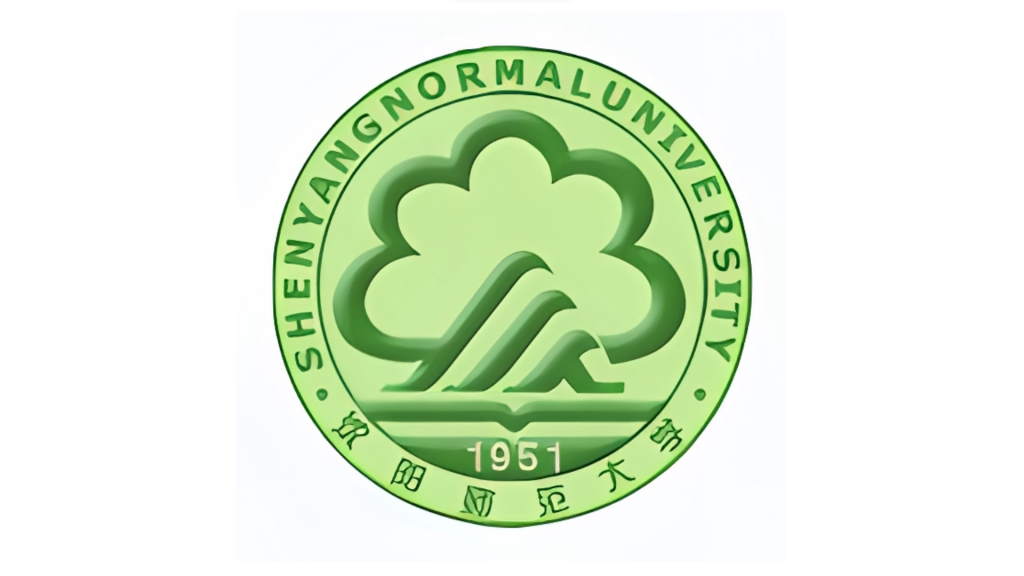
College of Grain Science and Technology of Shenyang Normal University has developed a unique composition for the natural preservation of meat analogs. They use a blend of 1% chitosan, 2.5% tea polyphenols, and 0.04% nisin as natural ingredients.
Advantages:
- Extends shelf life by four times to 56 days.
- Inhibits bacterial growth and preserves the quality of the meat.
- Delays changes in sensory score, color, pH, fat oxidation, and juice loss rate.
Analyst comment: Innovations incorporating natural preservatives, like Opuntia pulp, have shown promising results in extending the shelf life of meat analogs up to 56 days. These advancements should be on the radar of all plant-based meat manufacturers for potential incorporation into their products.

Food Tech Trends Report
Read The ReportInnovations using physical methods
These are the physical technologies explored in preserving and extending meat-free product’s shelf life.
While there are various technologies within Thermal and Non-thermal processing, we will focus on a non-thermal technique called High-Pressure Processing.
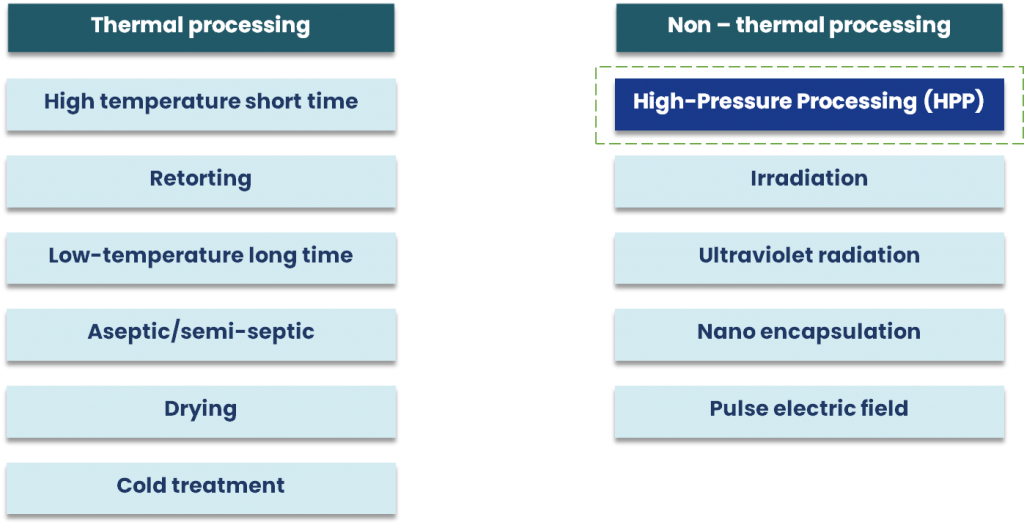
High Pressure processing (HPP)
Market research indicates that the global HPP foods market is expected to rise by 8.8% CAGR to $5224.6 million between 2023-28.
HPP is a modern and natural food preservation technique that uses high-powered hydrostatic pressure to extend the shelf life of perishable food products. The process subjects packaged food products to extremely high pressures (up to 600 MPa or 87,000 psi) using water or a water-based solution.
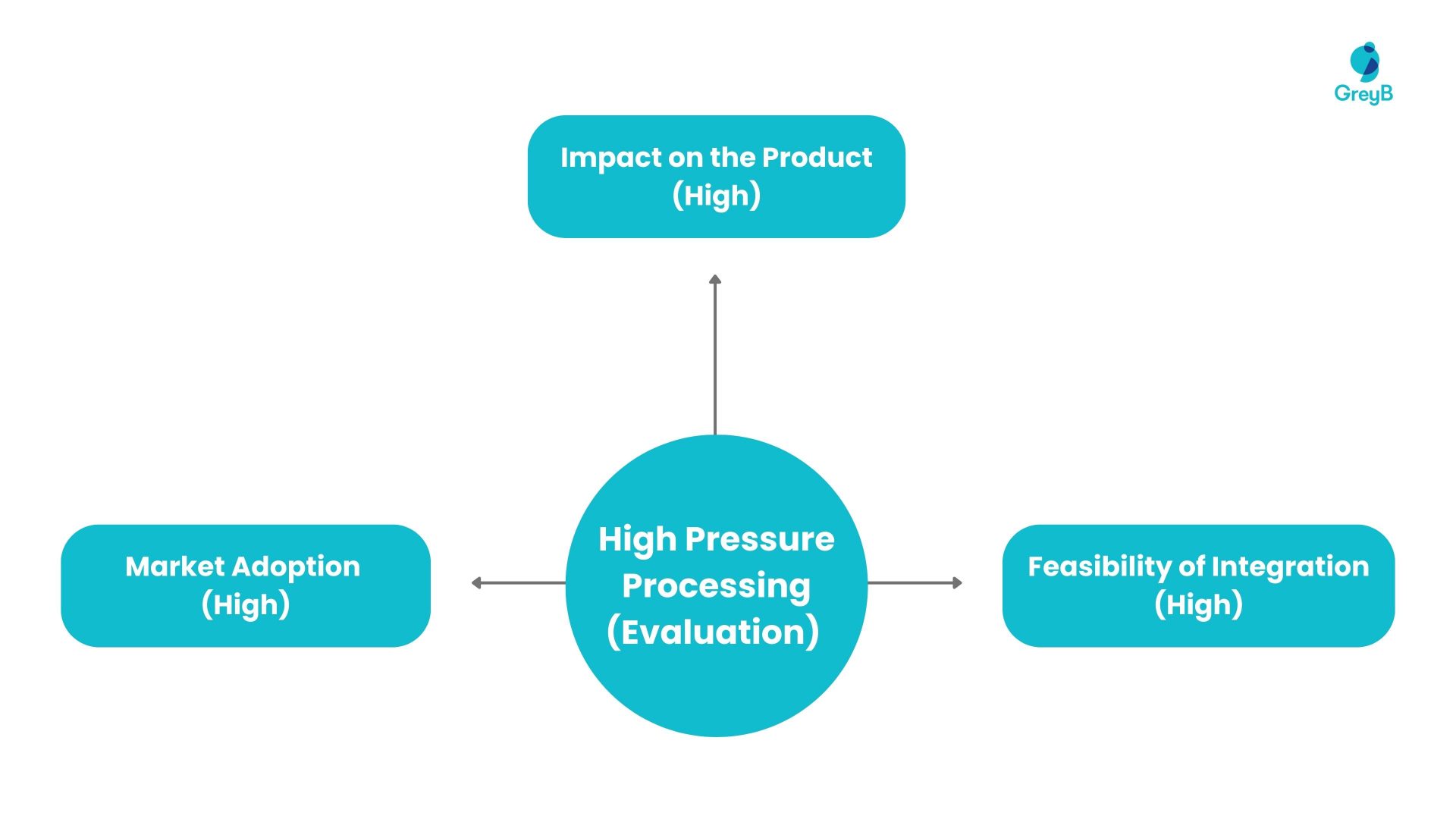
HPP effectively eliminates microorganisms such as bacteria, viruses, yeasts, and molds. Therefore, it can extend the shelf life of fruit juices, deli meats, and seafood.
Mechanism: A non-thermal (5ºC – 20ºC) process based on the use of high isostatic pressure transmitted by cold water of up to 6,000 bar /600MPa /87,000 psi, held for a few minutes.
Advantages:
- This pressure is transmitted uniformly and instantaneously throughout the product, achieving an effect equivalent to pasteurization.
- Uses only water and pressure instead of heat.
- Inactivates foodborne pathogens such as Listeria, E. coli, and Salmonella
- Extend the shelf life of plant-based food products.
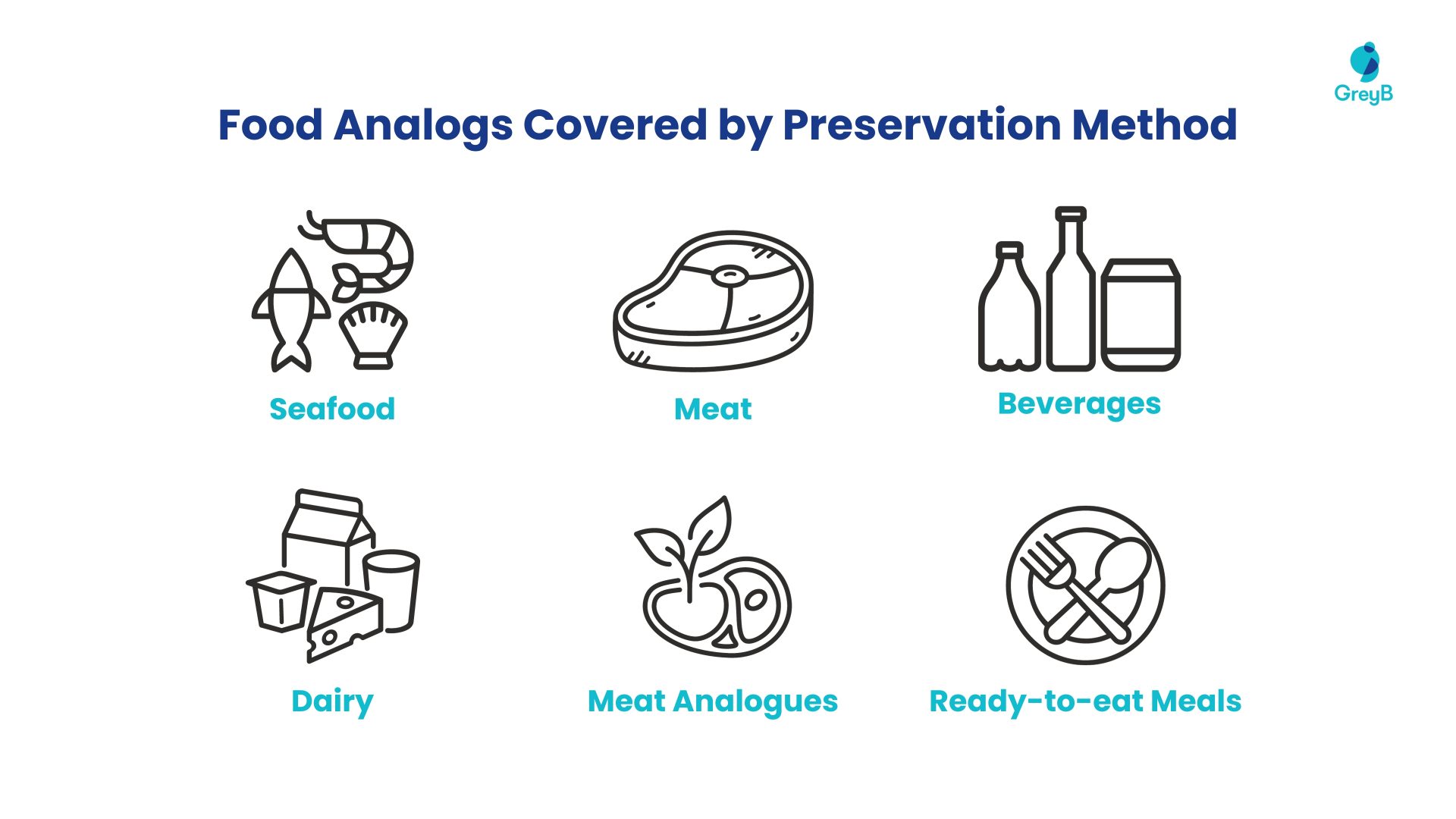
Application Areas:
- HPP is already widely used in the food and beverages sector.
- Meat analog companies are employing HPP to increase product shelf life up to 75 days under refrigeration.
Why HPP?
High feasibility of integrating HPP technology: Commercial equipment availability and successful implementation in other food sectors
Competitive advantage: HPP generates 6 times greater pressure than other non-thermal techniques, making it a versatile solution for inactivating microorganisms and preserving food.
Available commercially: Commercially available HPP technology is manufactured by companies like Hyperbaric.
Interest by Government organization: CSIRO, an Australian federal government agency, is researching the use of HPP technology for natural food preservation.
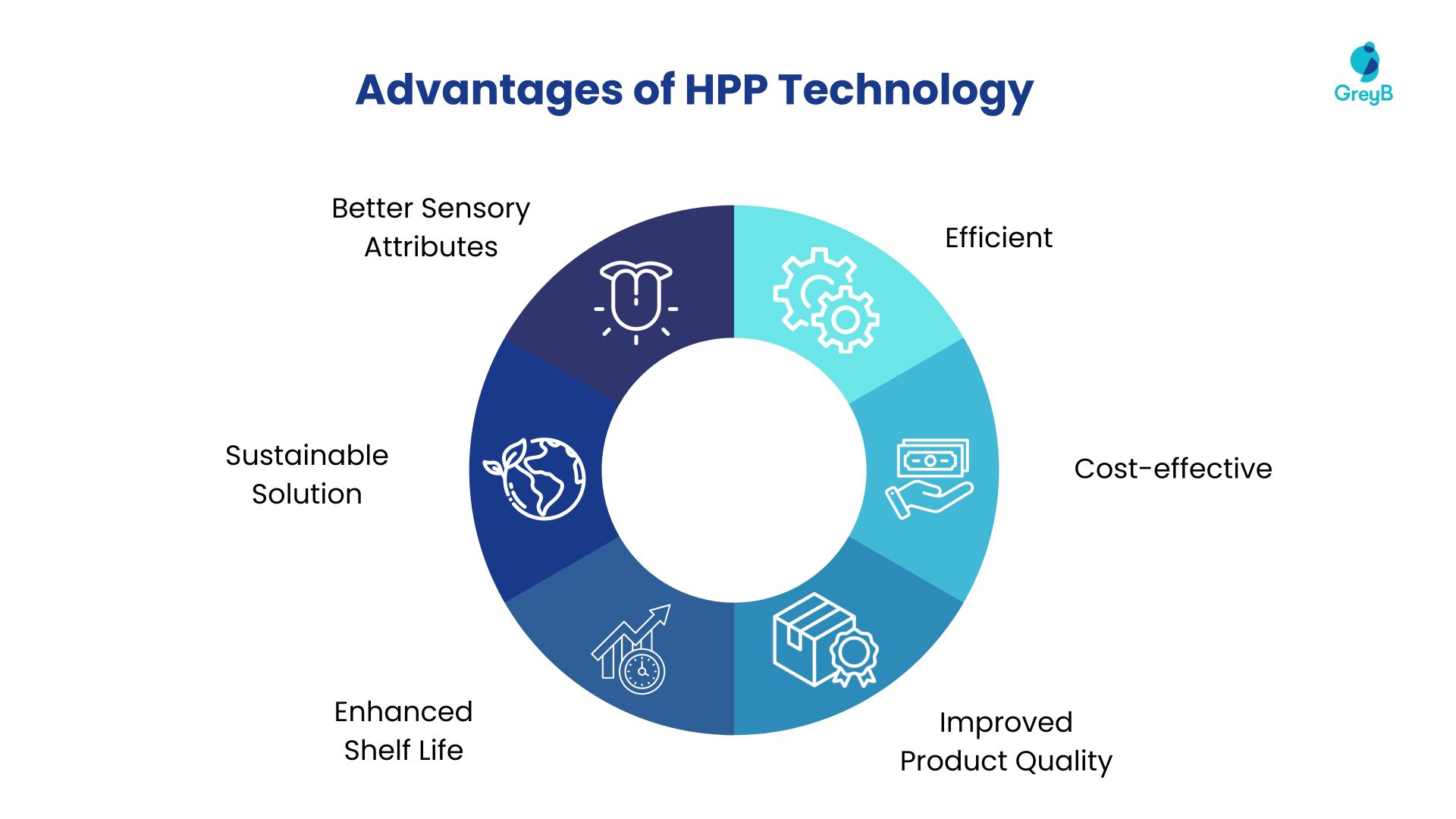
Prominent researchers and service providers of HPP
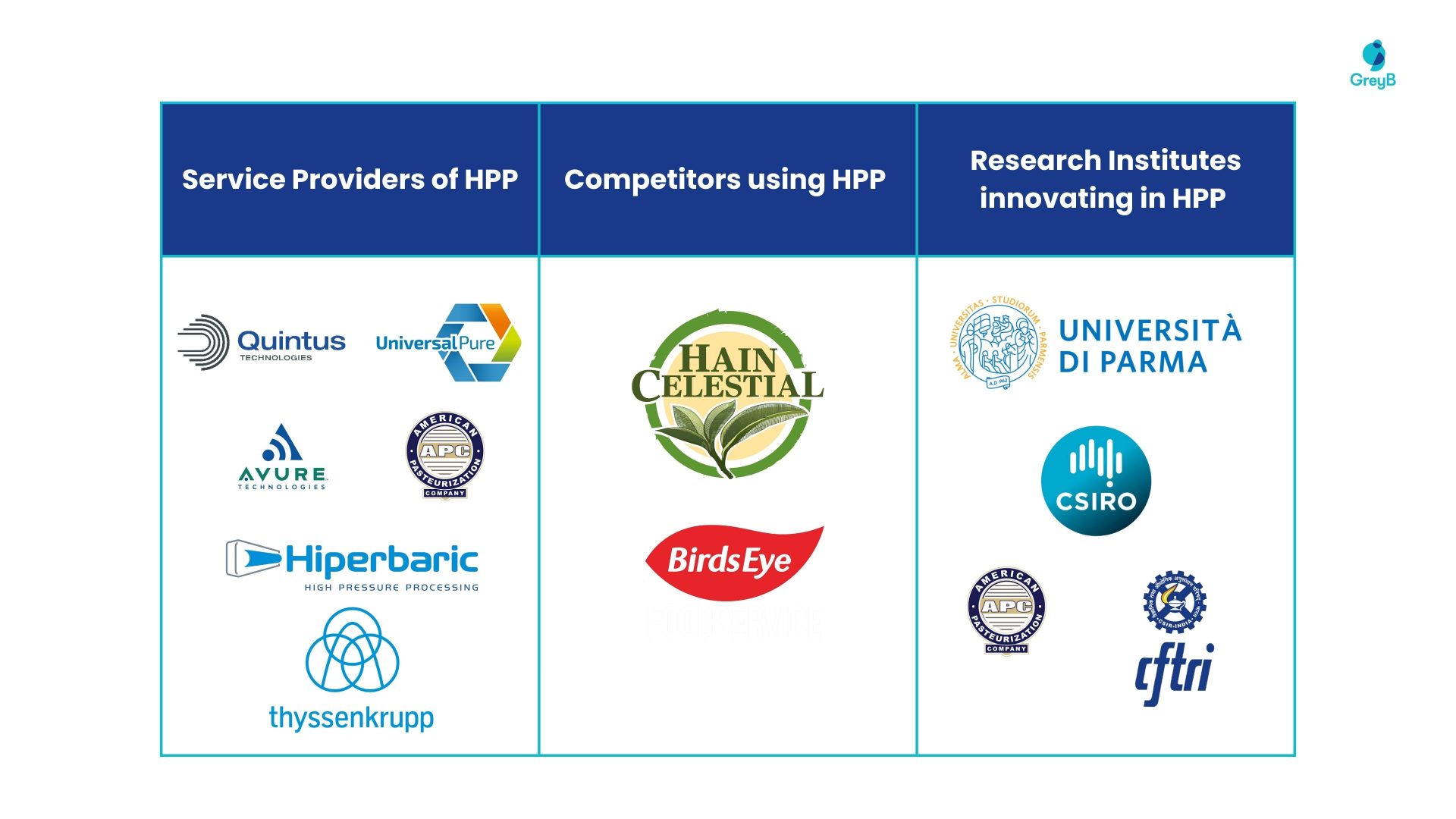
An in-depth peek into how these companies use HPP will help you plan for the following year. Our research experts can analyze the threats and find the right collaboration and acquisition opportunities for your company.
Request our landscape research to make well-informed decisions for your company.
How Can We Help You?
We support industry-leading R&D and Innovation professionals through complex problems. Describe your challenge, and let us bring clarity and expertise.
Recommendation: HPP technology improves plant-based products’ formulation, extends shelf-life, enhances food safety, and enables a cleaner label with fewer ingredients while maintaining sensory attributes. With its heat-free approach, it is a promising technology for food products and is readily available through equipment suppliers.
Other notable innovators in food preservation
Aside from High-Pressure Processing, here are other notable innovators using physical processing methods to extend the shelf life of their products.
1. Renegade Foods
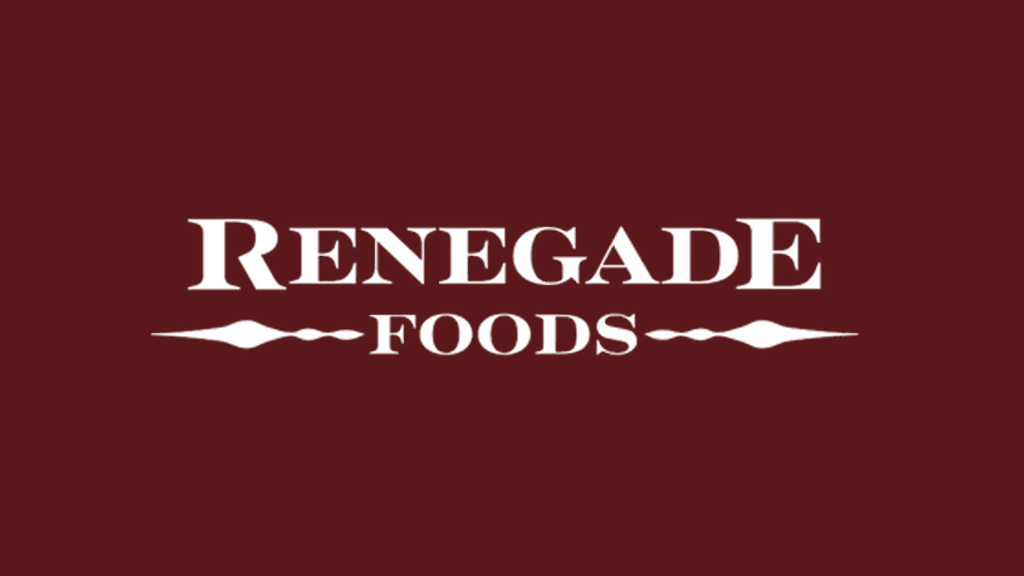
Renegade Foods, an animal-free, organic charcuterie brand, has introduced a new plant-based food line requiring no refrigeration. This marks a first of its kind in the vegan culinary world. Usually, only animal meat salami can be stored on the shelf.
Product: They developed a line of premium, shelf-stable smoked deli meats from high-quality plant-based ingredients.
Innovation: Their product combines chefs’ talent with organic ingredients to create a shelf-stable vegan “meat” that doesn’t need to be frozen.
Advantages:
- Retains original flavors and textures
- Claims to not over-process, add flavors, or preservatives.
2. Tereos

Tereos, a European producer of native starches and sweeteners, has invented and patented a thermal processing method for obtaining an extended shelf-life proteinaceous meat analog.
Innovation: Static heating for a fixed duration to reduce water content.
Details: This method involves static heating of the agglomerate between 120 to 160° C for 1 minute to 1 hour and to reduce water content (less than 20% (w/w)).
They suggest the inclusion of a plasticizer, such as a mixture of polyhydroxy alcohol, starch hydrolysate, and carboxylic acid. They recommend blending the mixture through z-blenders, ribbon mixers, planetary mixers, or co-rotating intermeshing extruders.
The mixing step is carried out in a batch, preferably at a temperature of less than 100° C (ideally, between 40 to 50° C) for long enough to obtain a dough-like composition.
Techniques for Preserving Meat Texture
Innovative approaches in packaging processes
New packaging processes can help maximize the quality and shelf life of meat analogs. Let’s explore some of the most prominent and effective ones:
Modified Atmosphere Packaging (MAP)
MAP alters the air around the food product, slows spoilage, and extends the product’s shelf life. Furthermore, it prevents the oxidation of lipids and unwanted color changes. MAP has become increasingly popular due to its many benefits, such as improved product quality, enhanced shelf life, and lower food waste.
Active Packaging
Active packaging (AP) functions by either releasing active antioxidants and antimicrobial compounds or removing certain gases. These packages often use desiccants, which are hygroscopic substances usually in a porous pouch or sachet placed inside a sealed package to control moisture.
Active packaging effectively prevents microbial growth and increases the shelf life of meat analogs. Furthermore, recent advances in packaging science have increased the use of biodegradable materials and biopolymers to achieve the same objectives more sustainably.
Vacuum Skin Packaging
This packaging technique consists of adding a thin layer of plastic film over a tray onto which a food product is placed. The film is then tightly sealed around the tray’s edges to extend the food’s shelf life.
This packaging removes nearly all air from the tray pack and reduces bacterial growth. It prevents food spoilage, leakage, and contamination and prolongs shelf-life.
Notable Innovators In Food Packaging
1. Beyond Meat
Beyond Meat is a plant-based meat substitute producer from Los Angeles. They use modified atmospheric and vacuum packaging for their products.
2. Impossible Foods
This company develops plant-based substitutes for meat products. Their vacuum skin packaging (VSP) for impossible burger patties ensures they remain intact and last longer.
3. Shanghai Ocean University
The College of Food Science and Technology of Shanghai Ocean University has researched preserving soy protein-based meat analogs using PLA/PBAT antimicrobial packaging film.
Innovation: An antimicrobial packaging material is prepared by incorporating cinnamaldehyde (CI) or tea polyphenols (TP) into polylactic acid (PLA), polybutylene adipate (PBAT), and starch in the packaging.
Advantages:
- Improves storage
- Inhibits moisture evaporation,
- Inhibits microbial growth,
- Preserves meat analogs’ quality,
- Preserves safety and texture properties
4. Multivac
This packaging company has developed a way to vacuum-pack hot food in small to medium batches. Caterers find it challenging to vacuum pack hot food because it needs to cool down for effective packaging. This costs flexibility, time, and energy in the case of active cooling. When vacuum packing hot food, some residual air remains, adversely affecting its shelf life.
Innovation: Multivac’s solution to this problem is their SFP Light ‘steam flushing’ system. It can pack hot food products directly after cooking.
For instance, to pack 5 kilograms of goulash at 60 °C,
- the thermoforming packaging machine first forms the pack cavities for the product from a plastic film.
- The portions then travel into a hermetically enclosed sealing station.
- Hot steam at a temperature of 180 °C now flows through the station.
- Finally, the upper web is sealed to the formed film, and the steam remains in the pack.
- Then, when the steam turns to water again during cooling, the pack automatically contracts.
Advantages:
- The SFP Light system enables the packaging of hot products without significant residual air pockets.
- This process does not need a vacuum source, which often has limited effectiveness due to the constraints of the vapor pressure curve.
- The process eliminates any risk of products boiling or packaging bursting because there is no negative pressure within the product space.
- The high-temperature gas at 180 °C effectively kills bacteria on the surface of the food.
- Ensures the food is safe and extends its shelf life.
5. EIDP Inc.
EIDP Inc., formerly E.I. du Pont de Nemours and Company, holds a patent for a water-soluble antimicrobial film for foods and beverages.
Innovation: The product is a film-forming, water-soluble, or water-dispersible agent that prevents microbial buildup on the applied surface. The coating can be easily removed with water between 15°C to 100°C temperatures.
Advantages:
- Reduces microorganism growth
- Reduces water loss from the food
- Water-soluble and easy to remove before use.
Conclusion
The above solutions and market innovators show promising results and will lead the way to preserving meat-free foods using more effective methods. As you may have gathered, collecting information on potential competitors and mapping an industry landscape is an exhaustive task that requires lots of time and resources.
Our researchers assembled the above collection using specialized internal tools, intellectual property insights, and innovation expertise. But this only scratches the surface—a more comprehensive deep dive into this field and detailed evaluation of your direct competitors is imperative to derive actionable insights.
Let our experts take care of your complex landscape research and analysis needs.
How Can We Help You?
We support industry-leading R&D and Innovation professionals through complex problems. Describe your challenge, and let us bring clarity and expertise.

